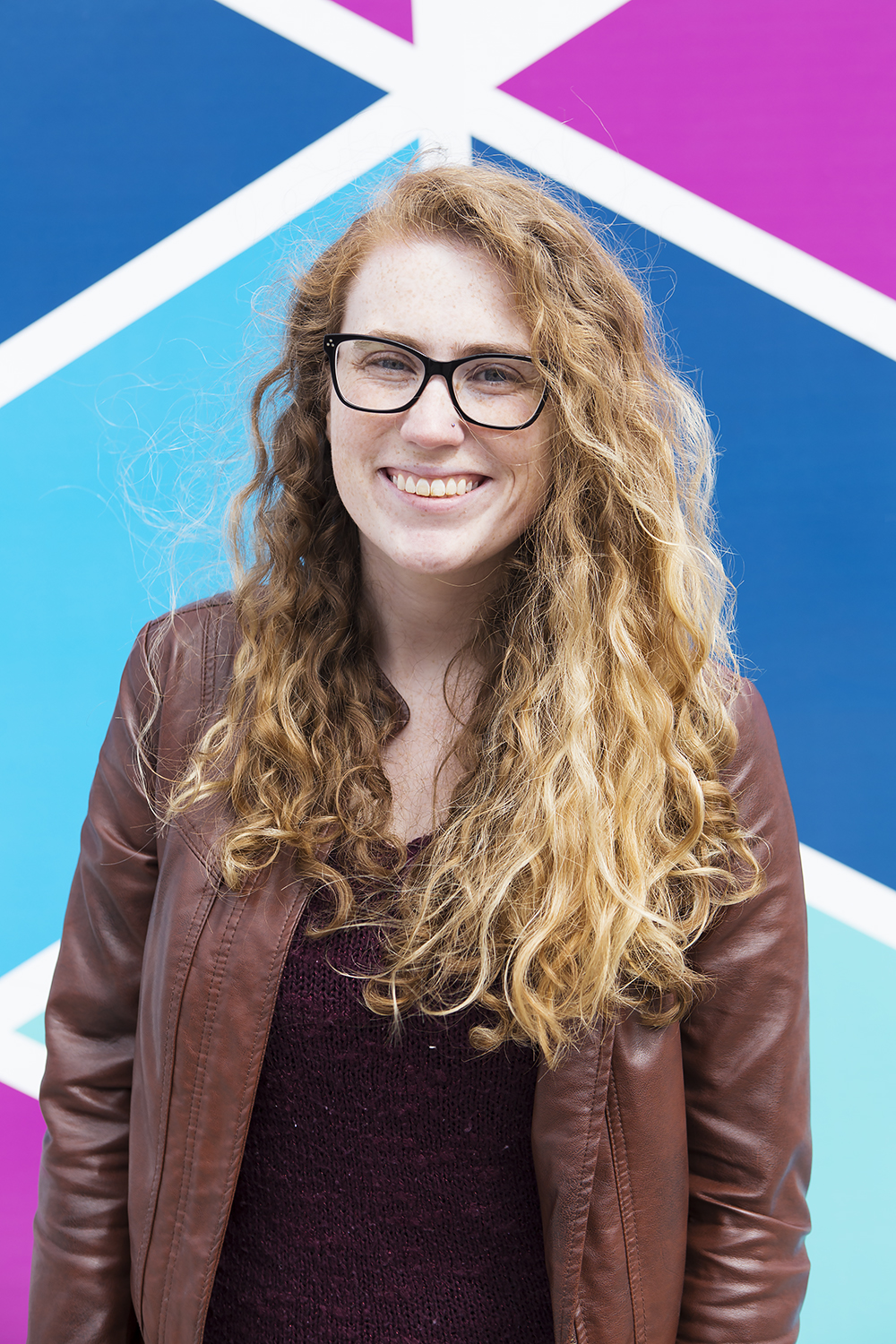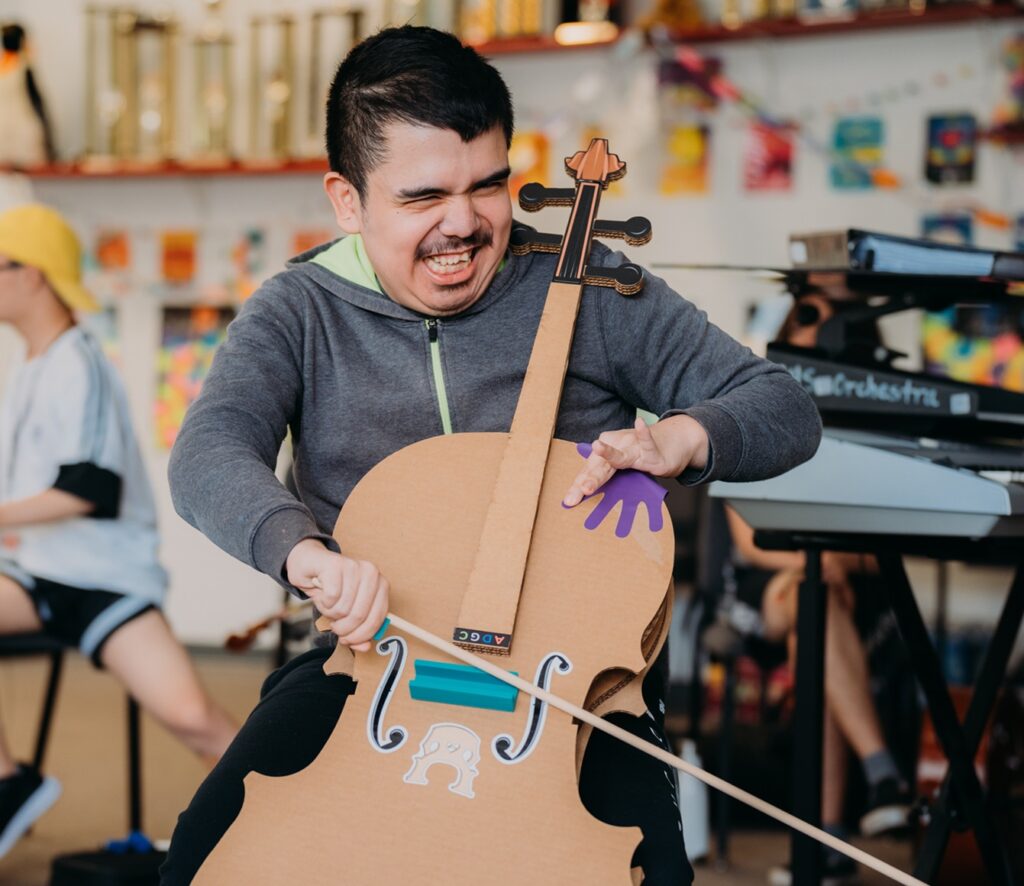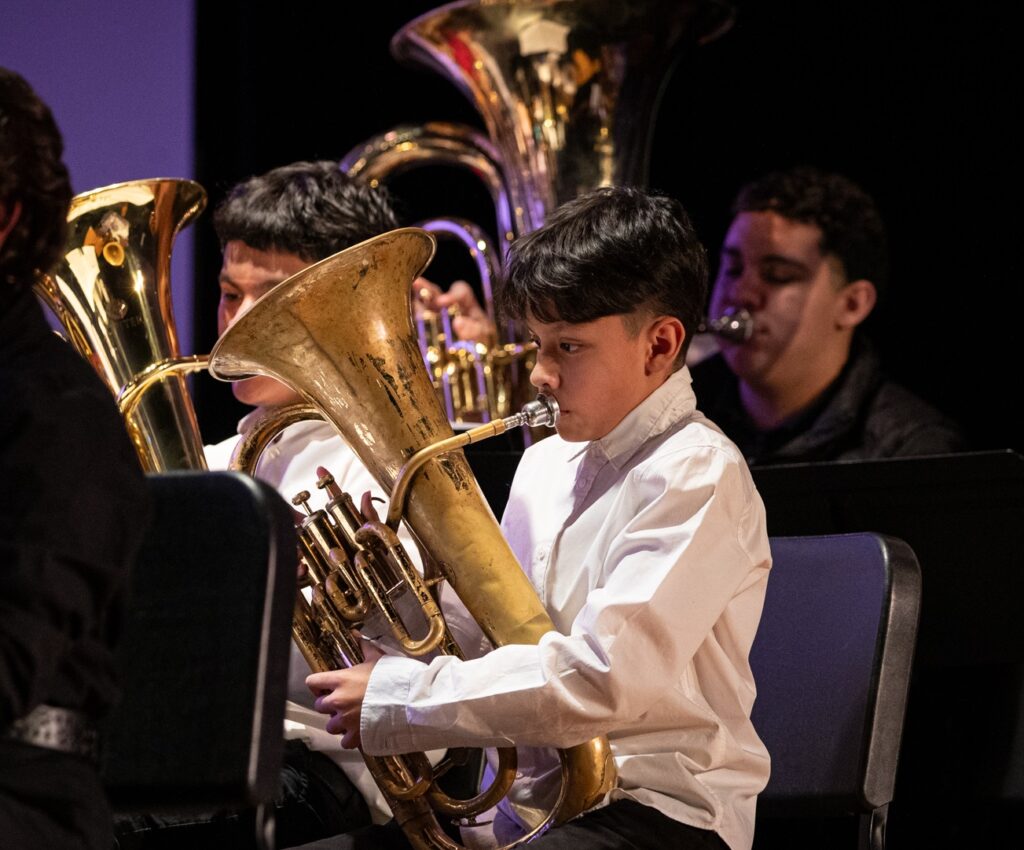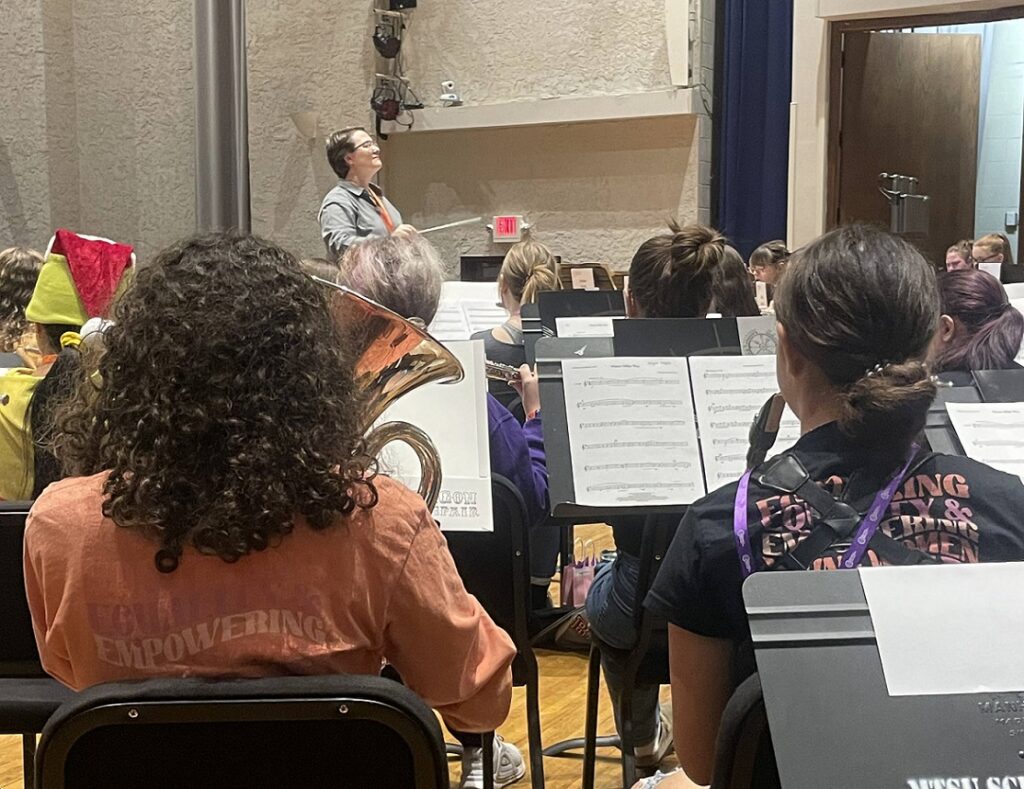Tagged Under:
Creatively Reach Special Needs Students
A California music educator offers special education students musical opportunities, using different and effective approaches.
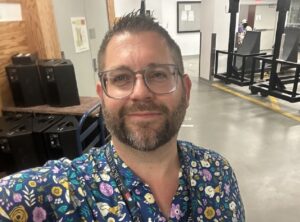
When Brad Hart, instrumental music teacher at Peter Johansen High School in Modesto, California, noticed that the school has a large portion of students in special education classes, he also realized how little accommodation most music programs — including the ones he participated in as a student — have for students with special needs. Because the school has three full-time special ed classes, Hart decided to find ways to get those students engaged with music. “Every student deserves a quality music education,” says Hart.
While many schools have inclusion as a goal, Hart noticed a lack of tangible solutions. “In terms of inclusion, it was very much like, ‘You should include people!’ But then there are no tips, no tricks, no real way to do it, no process to do it,” he says.
Now in his 13th year of teaching, Hart has created a process for including special needs students in his music program at Johanson in two unique ways: 1) through creating accommodations for special needs students in his concert band class and 2) through pioneering a bucket drumming ensemble for special education classes.
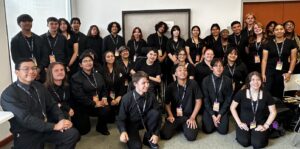
State Standards, Student Standards
The plan to commit to inclusion in music classes first came to Hart during a school faculty meeting. An administrator explained that the state of California was requiring special education students to complete a certain number of minutes in general classes, which included music.
Hart realized that including new students in his classes was going to require some adjustments and accommodations. “We couldn’t just throw a kid into a band or guitar class and pretend that just putting them in the class means that they’re learning music in an appropriate way,” Hart says.
If students have a physical disability that limits their hand mobility, Hart could not teach them to pluck a guitar the way he could with an able-bodied student. If students have a developmental disability that prevents them from focusing on fast-paced changes, then they may not thrive with traditional ensemble instruction.
Without accommodations, these students would be left behind. “That means that we have a kid who’s enjoying the music, which is nice, but not meeting any standard,” Hart says. “It’s not really allowing them to express themselves through music. It’s been a joy to find more ways to get students to express through music.”
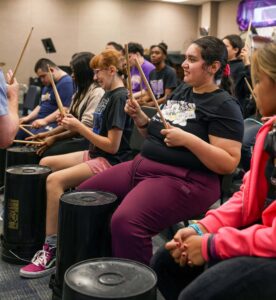
Bucket Beats
One of the ways that Hart has helped disabled and special education students learn to express themselves through music has been a bucket drum class, which meets once a week during his prep period. This class has a substantial population of students from Johansen’s severely handicapped classes and has taught students how to understand rhythms, perform rhythms and even create their own rhythms. “They end up finding grooves and combinations of rhythms that they like,” Hart says.
The 2023-2024 school year marks the third year of the bucket drum class, which includes all three classes of severely handicapped students, plus their paraprofessionals and special ed teachers. “They gave me that support system,” Hart says.
The bucket drum class meets for about 30 minutes once a week, and Hart has been able to make the most of this limited time. He keeps the class fast-paced, focusing less on theory and more on practice time. “It’s a lot more kinesthetic repetition,” he says. “I make sure there’s enough repetition of a singular concept in multiple ways so that students are likely to retain it.”
Hart is always finding new ways to modify his instruction to meet students where they are. “Last year for the drum class, we instituted holding up a stop sign,” Hart says. “It helped some of the more visual students, especially from a farther distance, know that we were stopping.”
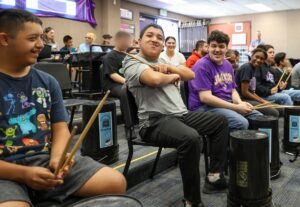
Musical Modifications
In addition to the bucket drum class, some special education students are involved in the concert band ensemble as well. Regardless of where they perform, students always have access to accommodations for their specific needs.
In the concert band class, these accommodations come from a mentorship program set up by the organization United Sound, which provides educational resources like books, games, flash cards and more to reach music students with special needs.
Johansen High School follows United Sound’s program, which allows band students to volunteer as “peer mentors.” Each peer mentor is paired with a “new musician,” often a student with special needs who is new to the music program.
Hart explains that this mentorship program has the added benefit of allowing more students to gain leadership experience. He prefers to assign peer mentor roles to students who have shown interest in leadership but aren’t already holding another role, like drum major or section leader.
In concert band, mentor musicians help new musicians gain necessary modifications. For example, a trombone players with mobility had difficulty when trying to move the slide fast enough. Hart says that the peer mentor helped rewrite this student’s parts to “make sure that his note changes happen with enough time in between so he can safely move the slide.”
Some peer mentors help students with mobility issues through a practice called “hand over hand,” where mentors put their hands on the new musicians’ hands to play piano keys, move a trombone slide, or any other movements that the new musicians might need assistance with.

New Performance Opportunities
Accommodations aren’t just for class periods and practice time; with more special education students in his music classes, Hart, who was recognized as a 2024 Yamaha “40 Under 40” music educator, is finding ways to make sure every student gets as many performance opportunities as possible.
At Johansen, band students perform at a winter and a spring concert. The band is also planning a trip to perform at Disneyland in June 2024. Because Hart wants to take as many students along as possible, he is already thinking about accessibility considerations. “Making sure a charter bus can accommodate a student in a wheelchair is a little different; it takes a different set of expectations and work,” he says. “We’re doing to give these are students and families performance experiences … [all] students and families deserve that same experience.”
Last year, Hart’s bucket drum class performed the song “Sweet Caroline” at Johansen’s homecoming pep rally. “The marching band played behind them, and it was a lot of fun,” Hart says. “You have all these kids who normally might observe the rally, who now had the opportunity to be part of the rally in a meaningful way.”
Feedback from students in the audience showed Hart that the bucket drummers were a valuable part of the rally. This year, the bucket drummers did not perform at the homecoming rally, and the Johansen student body was disappointed. “Kids came to me and asked, ‘Mr. Hart, where were the bucket drums? It was my favorite part of the rally last year!’” Hart says.
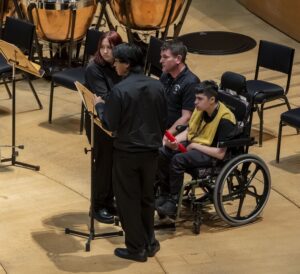
The Importance of Inclusion
Transitioning to an inclusive environment wasn’t difficult for Hart, because the focus for him is always on student fulfillment in music education itself, rather than on winning awards or competitions. Still, he emphasizes the importance of keeping the focus on the individual student’s educational needs, rather than on numerical grades or scores, for a truly inclusive environment. “So much of it is just changing your viewpoint,” he says.
For Hart, success in music is not about grades or ensemble ratings; it’s about how much each individual student can progress. “It’s a matter of, ‘How can we get them to learn as much as possible?’” Hart says.
Most important is remembering that inclusion means all students, not just the ones who show musical aptitude from the beginning. “It really is a long-term philosophy — the idea that every student deserves a quality music education means everybody,” Hart says.









